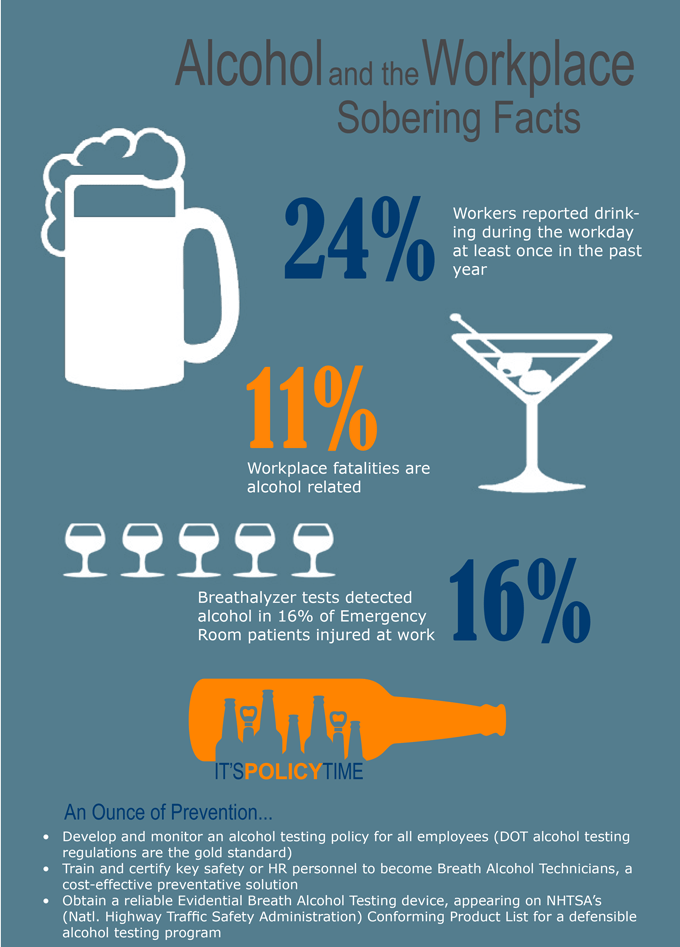This infographic on alcohol in the workplace statistics sheds some sobering light on workplace issues and can help you develop the case for implementing necessary preventative measures.

Alcohol in the Workplace Statistics
Alcohol use in the the workplace can affect any organization of any size. Having an alcohol and drug testing policy for all employees, not just employees in safety-sensitive positions, can reduce work related injuries and risks and provide a boost to overall productivity.
What preventative measures can your organization take?
Does your organization have an iron clad and defensible alcohol testing program in place? How equipped are supervisors in safety or HR departments to perform breath alcohol testing on an employee suspected of being under the influence? If the answer to either of these questions is “no”, then consider these preventative steps:
- Consider adopting DOT or Federally Regulated alcohol testing protocols as part of your employee alcohol testing program
- Develop a robust and generous Employee Assistance Program (EAP) as a cost effective means of prevention
- Consider training and certifying Safety Directors, Safety Managers or key HR personnel as a Breath Alcohol Technician as a deterrent and means of immediately removing employees who are suspected of being under the influence from their safety-sensitive duties
- Obtain an Evidential Breath Alcohol Testing Instrument as a means of performing breath alcohol screening and confirmation testing. The Alco-Sensor FST and Alco-Sensor RBT VXL are certified EBTs and provide for a legally defensible alcohol testing program.

